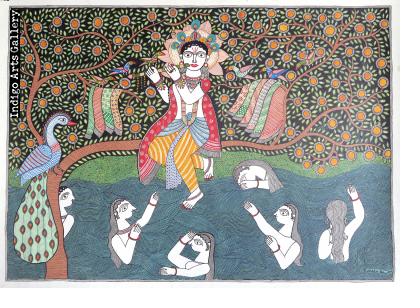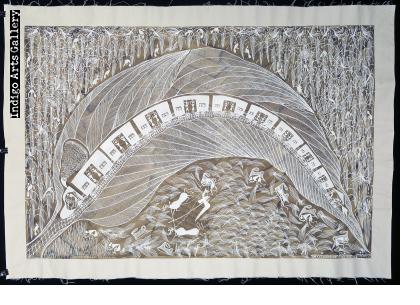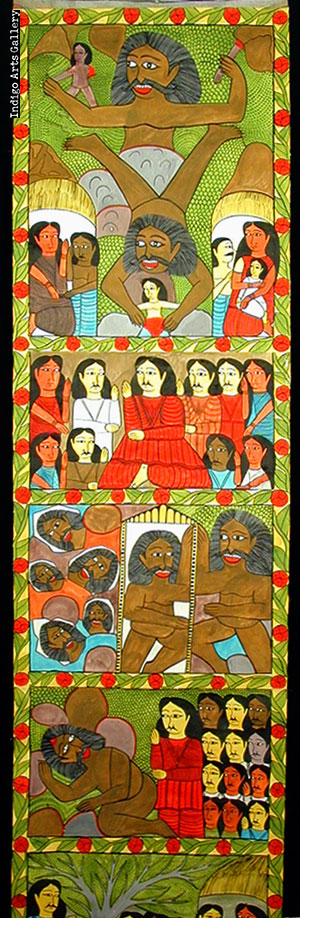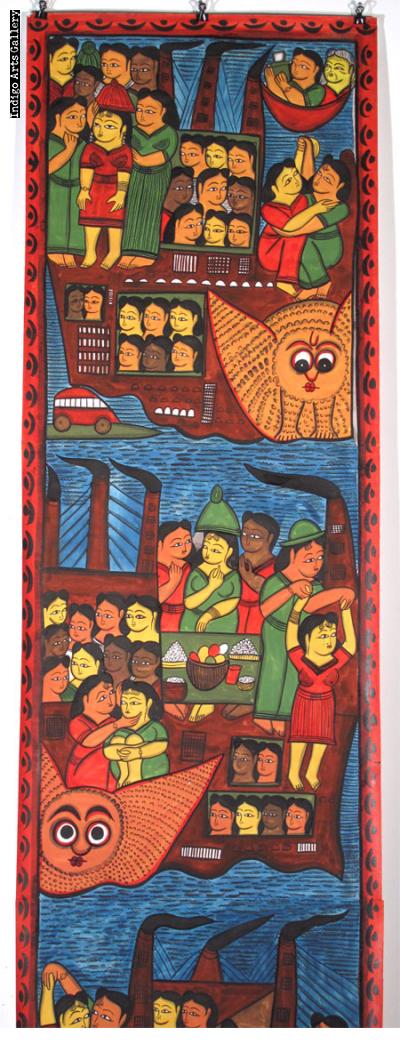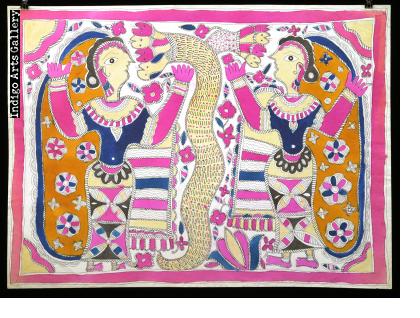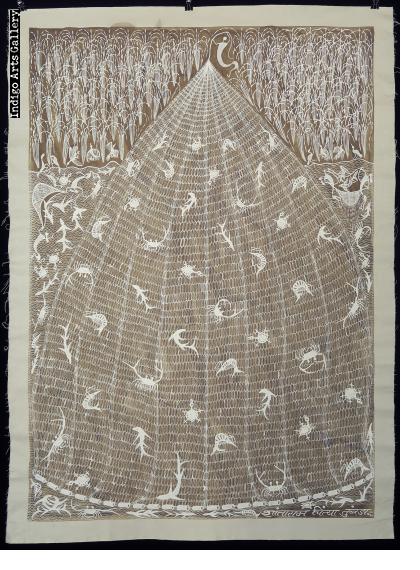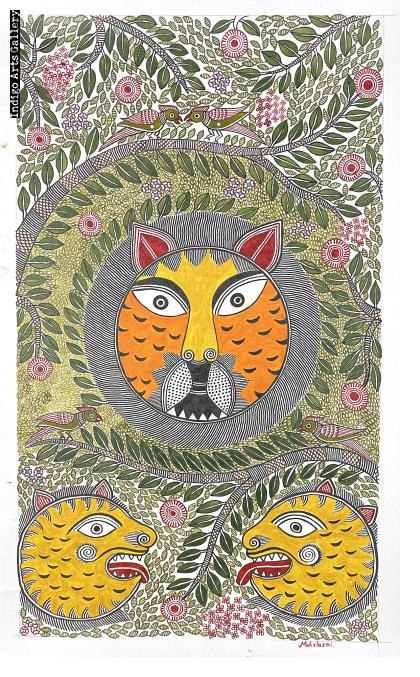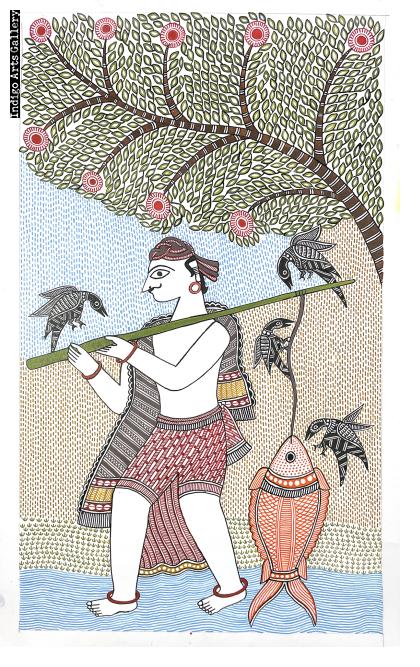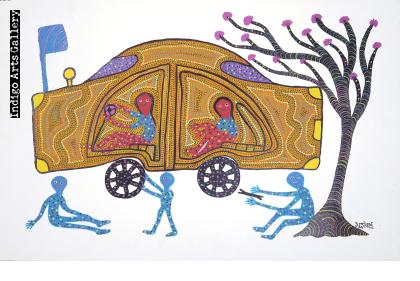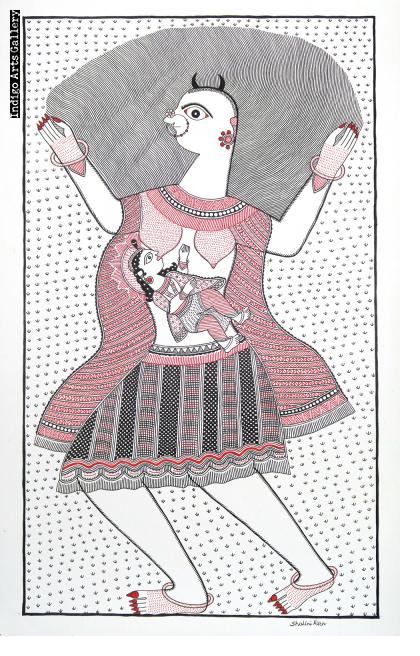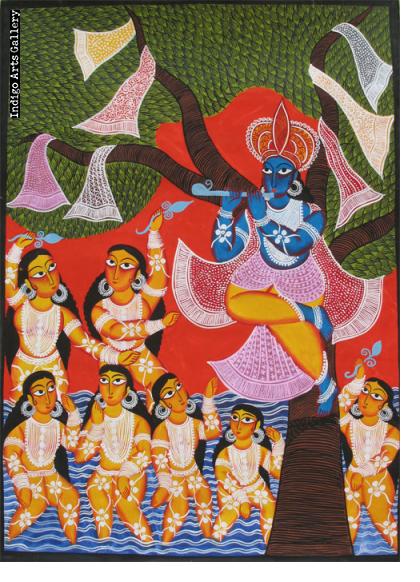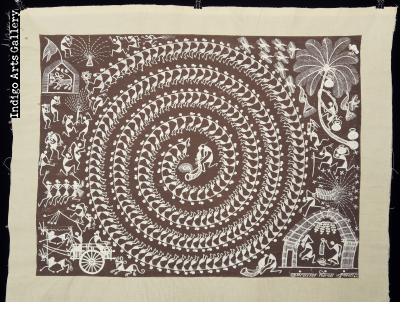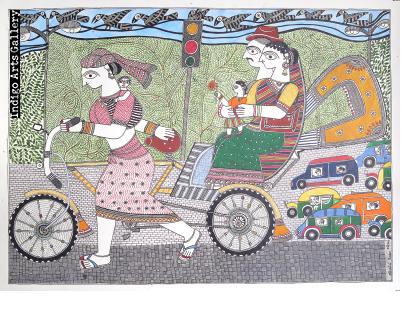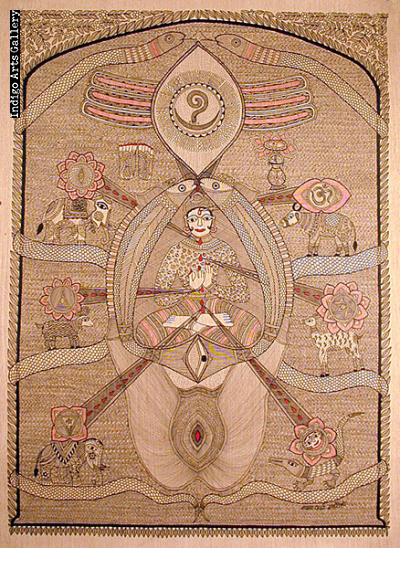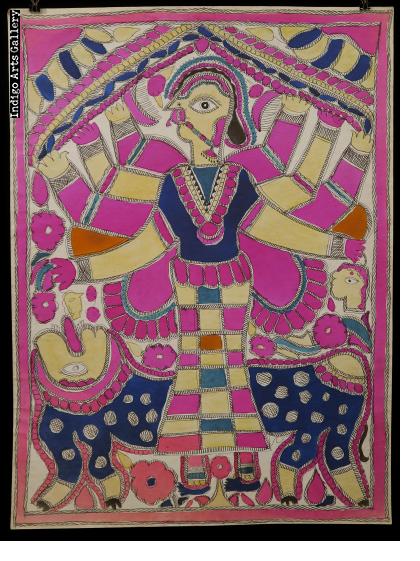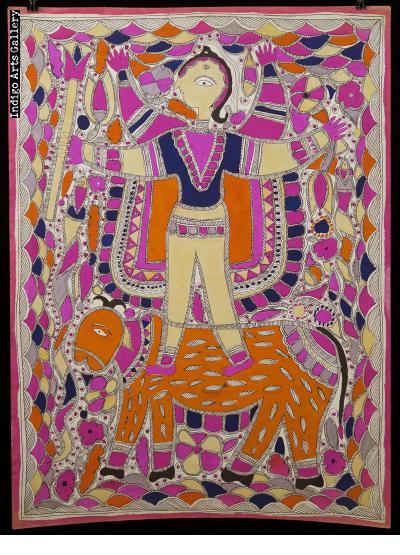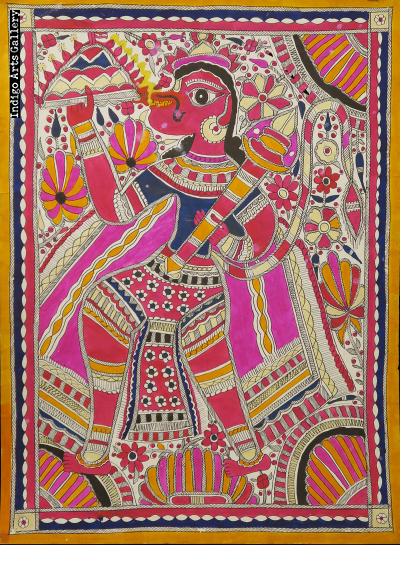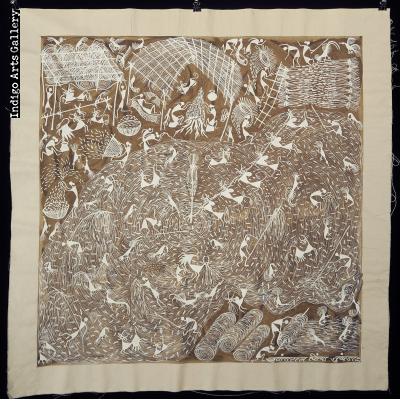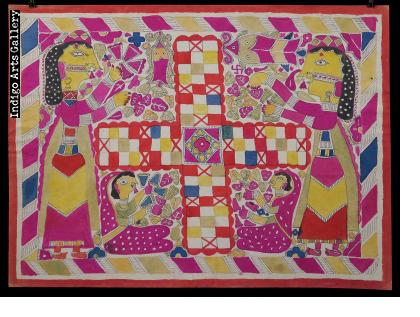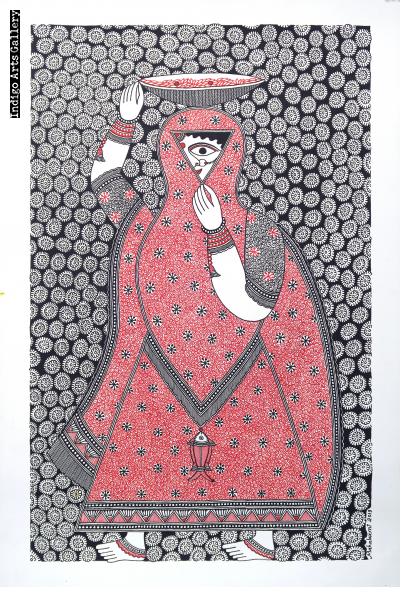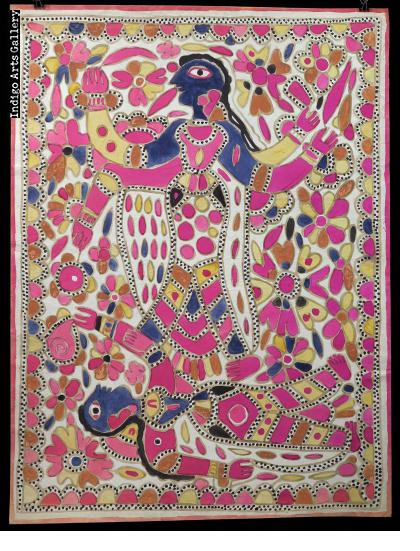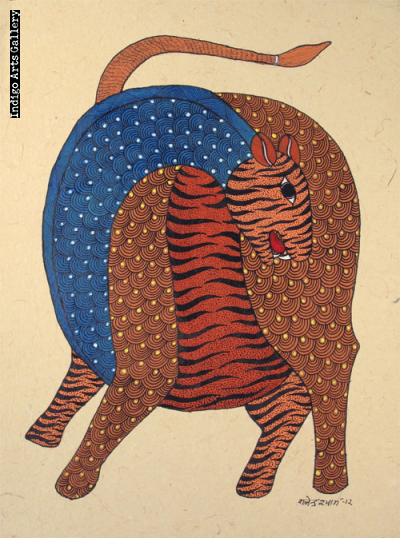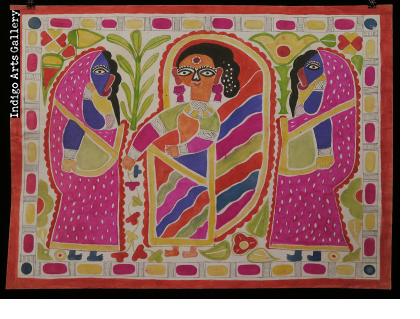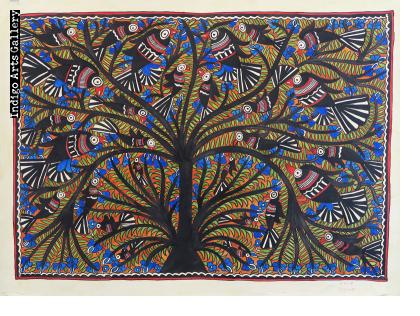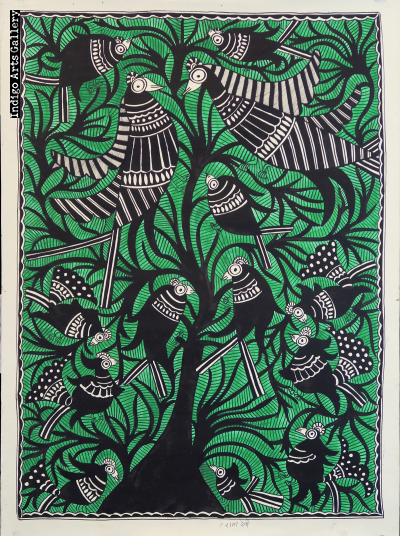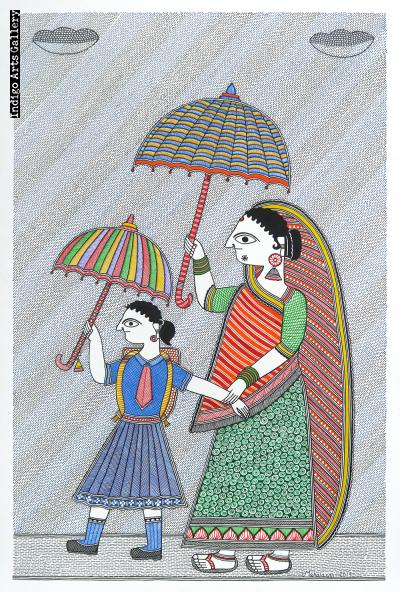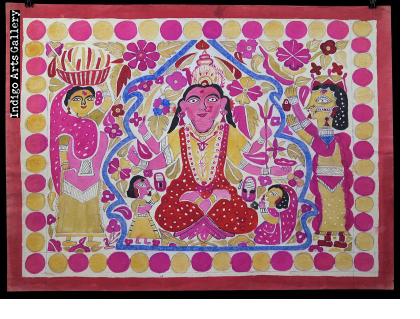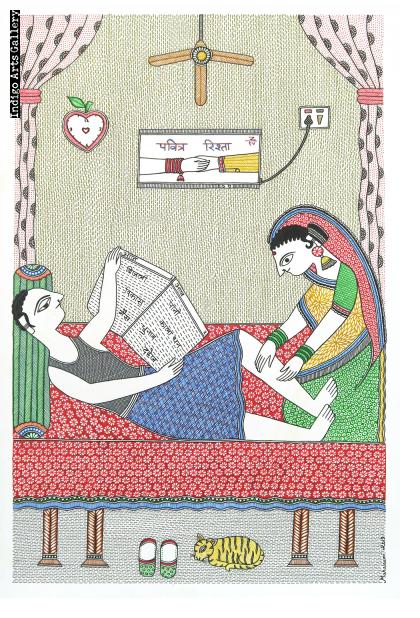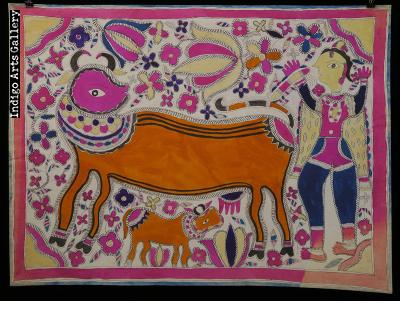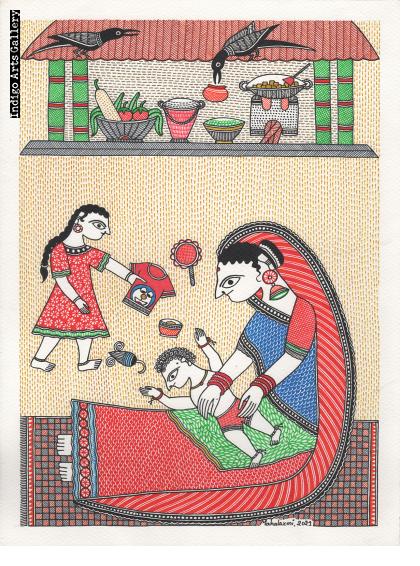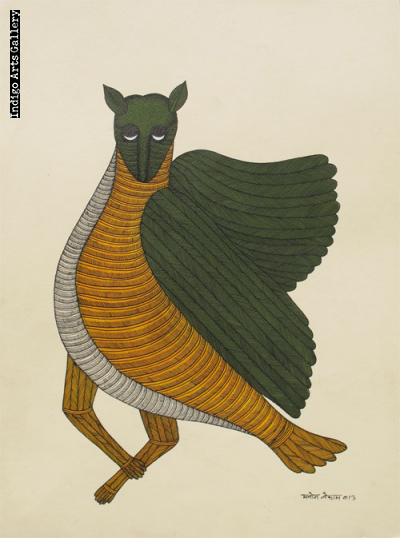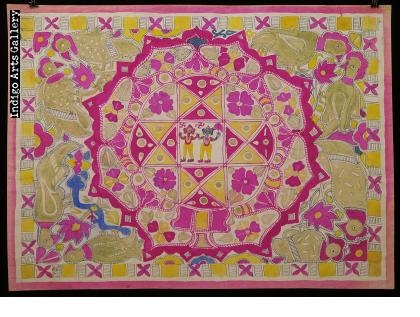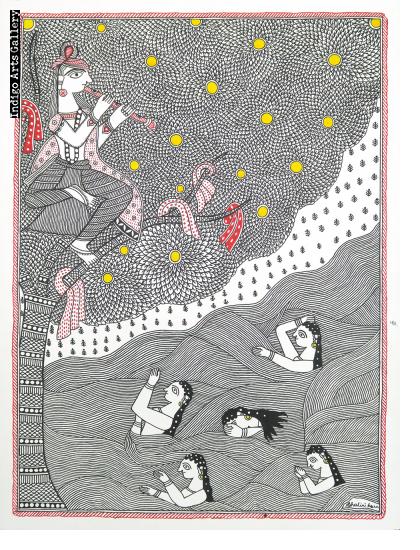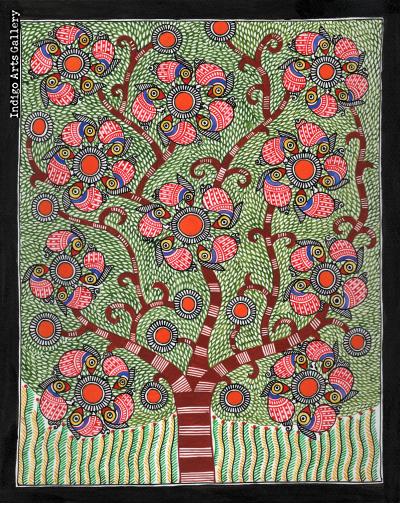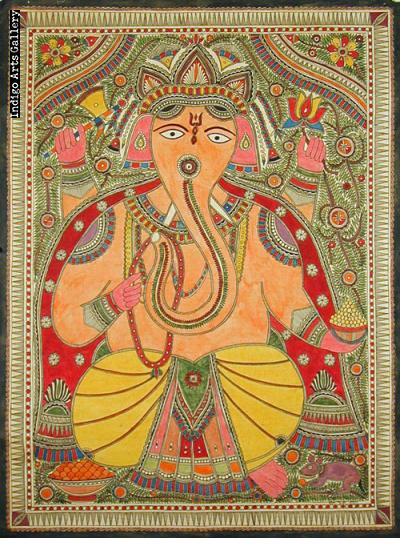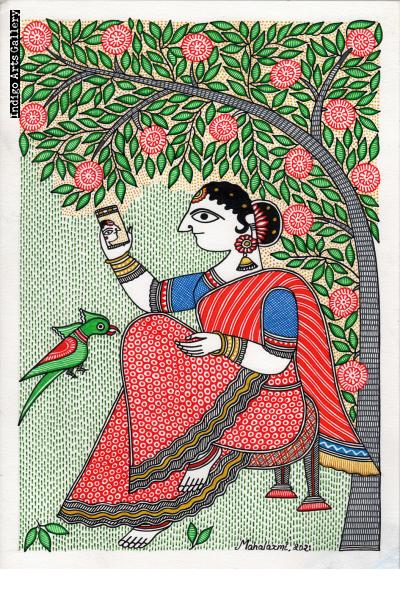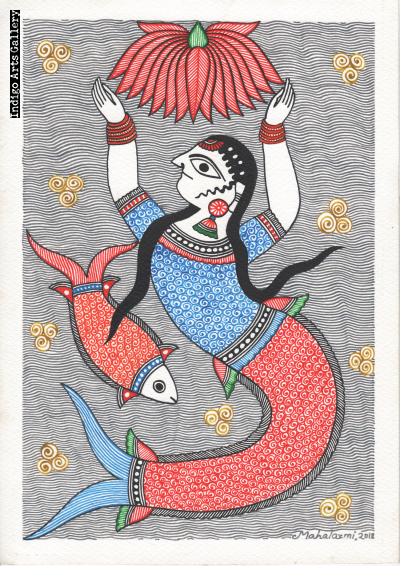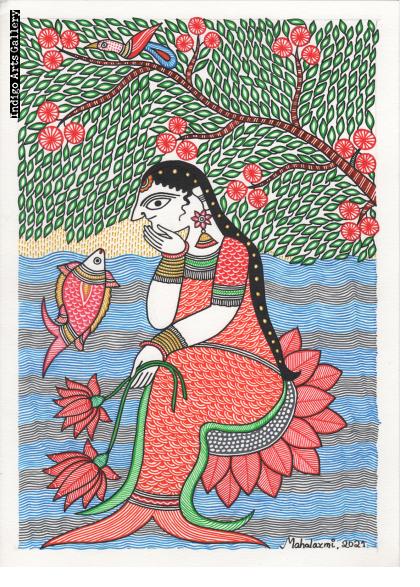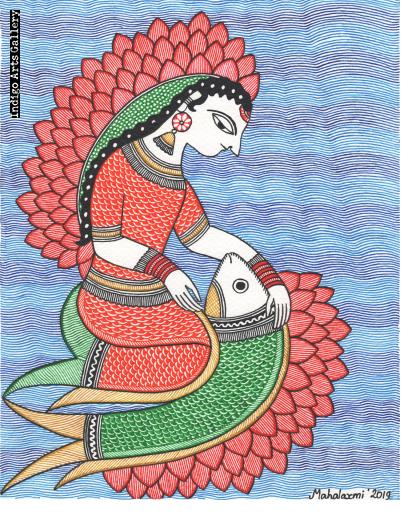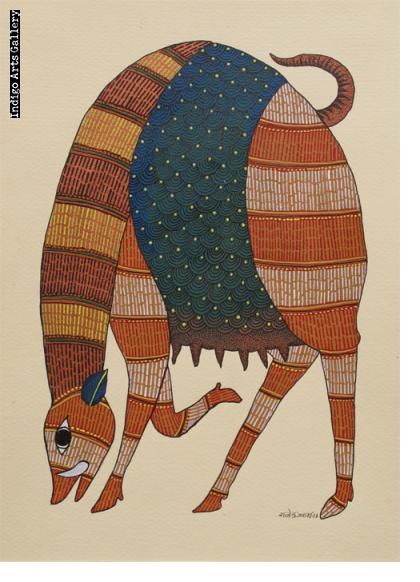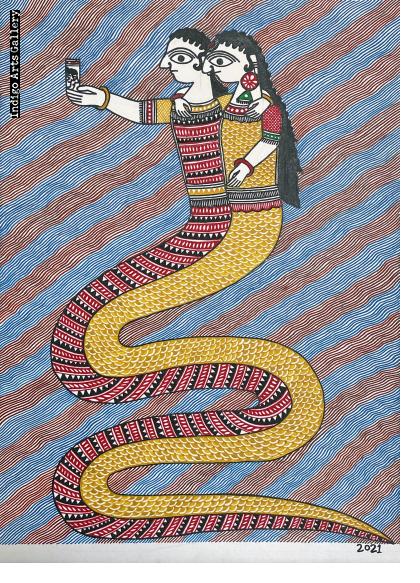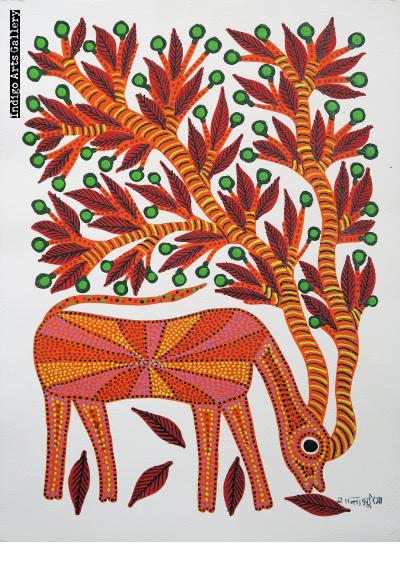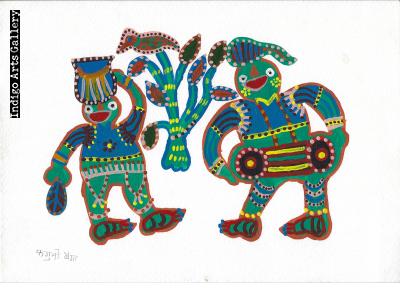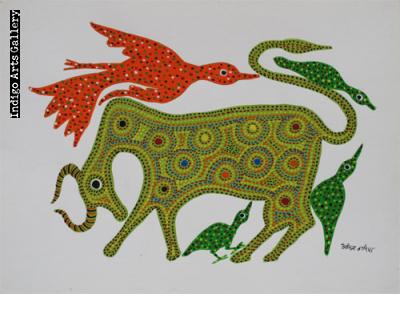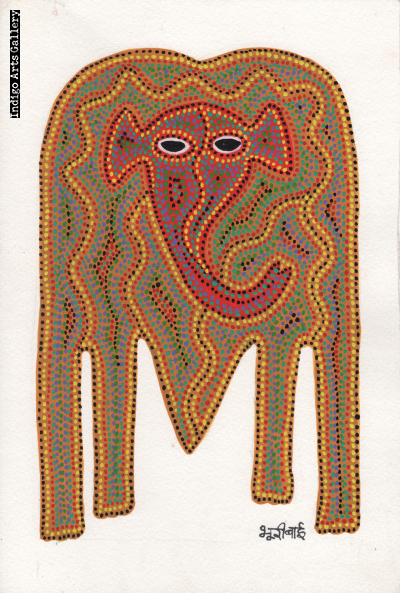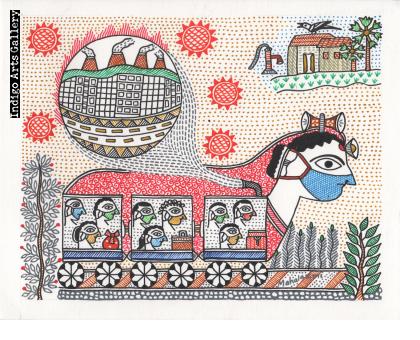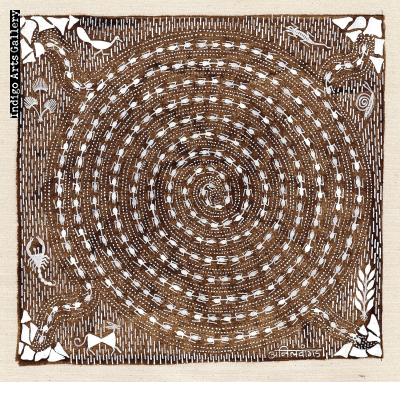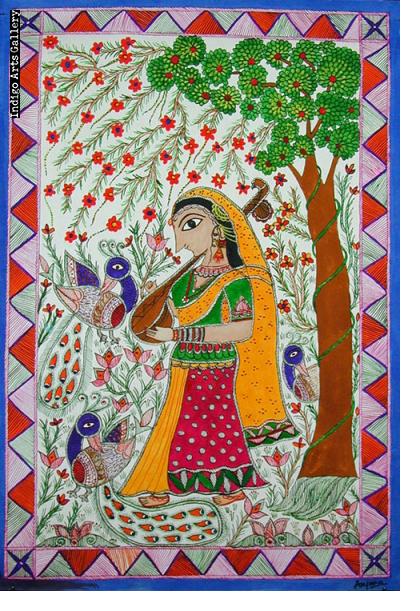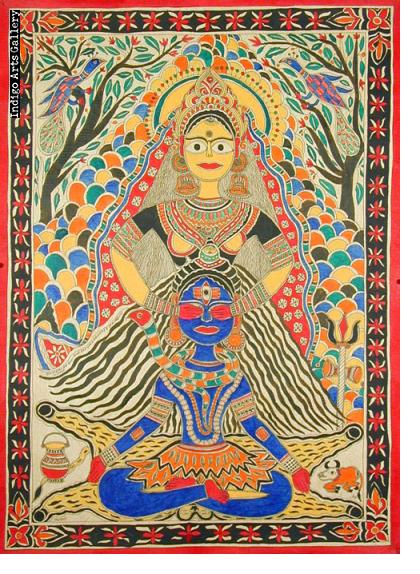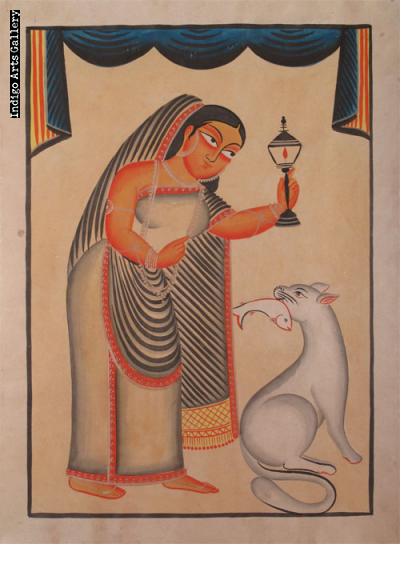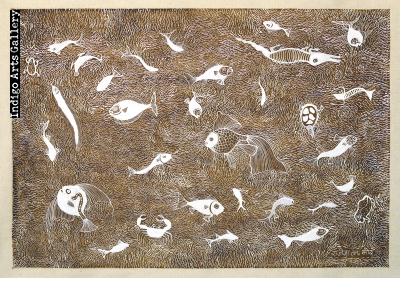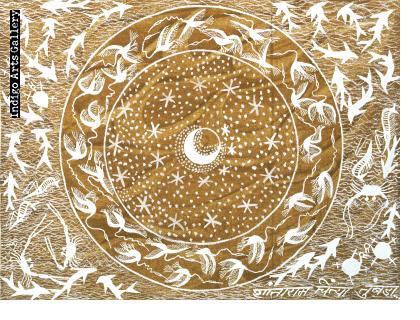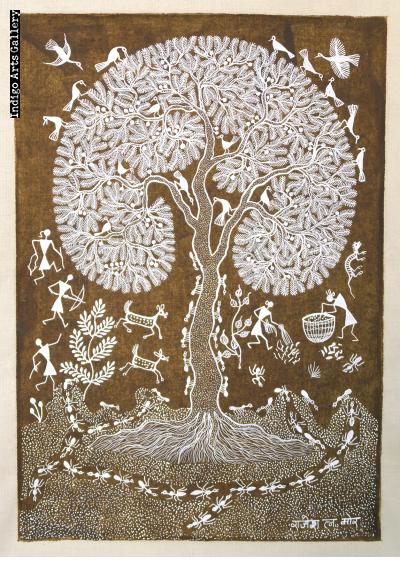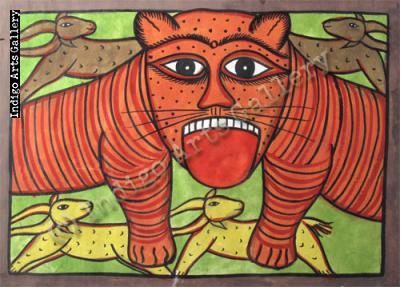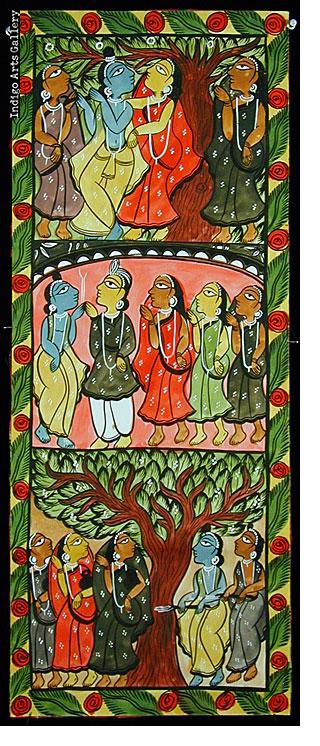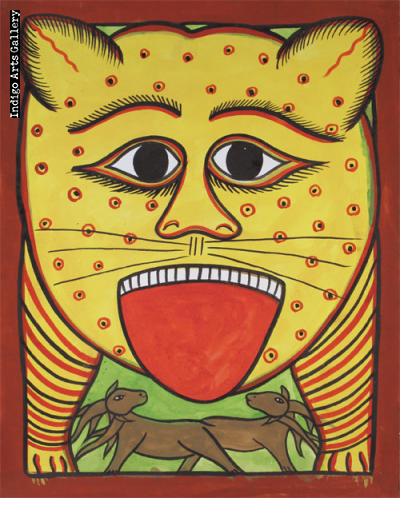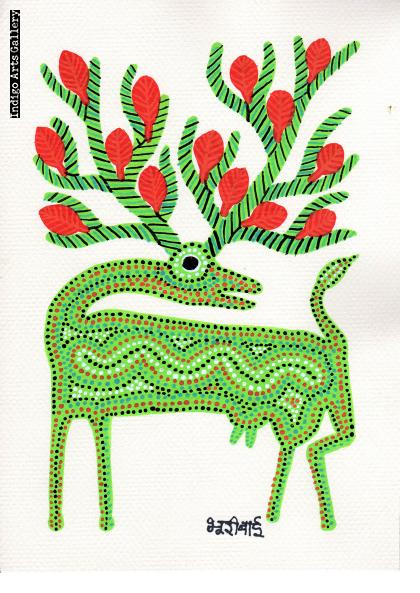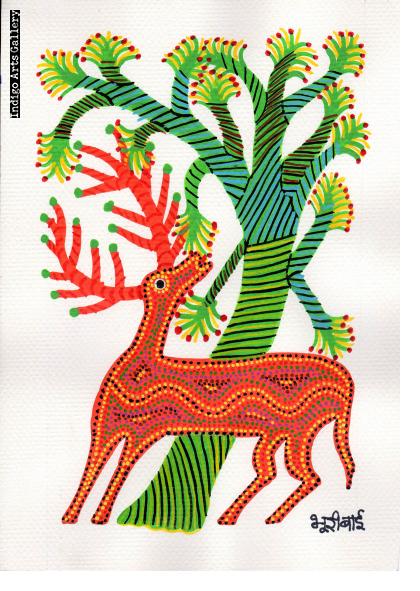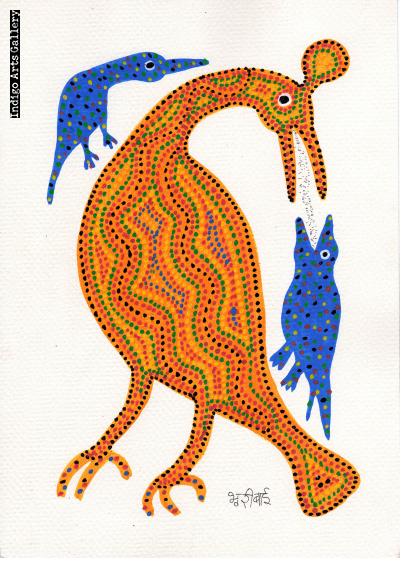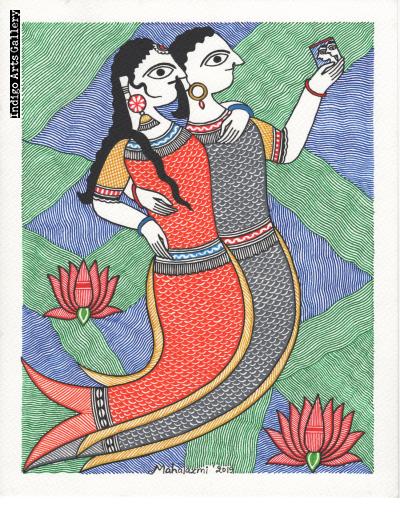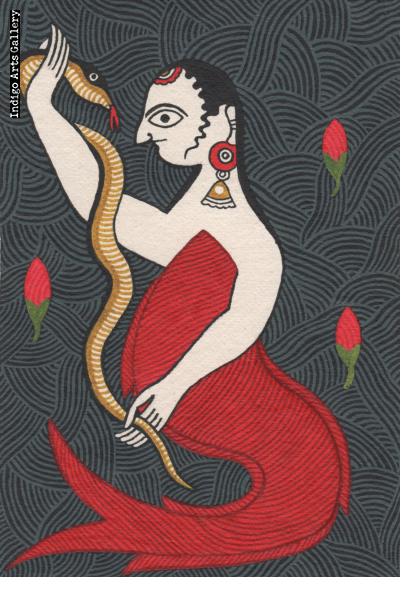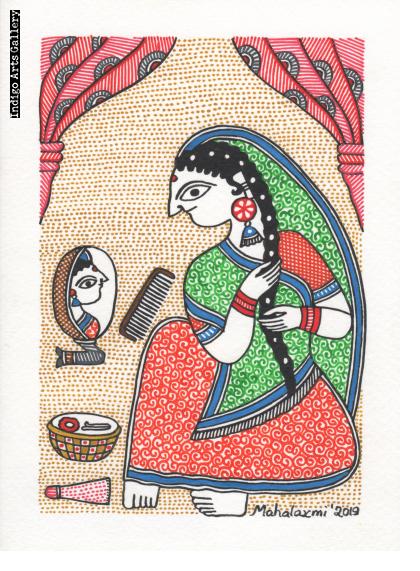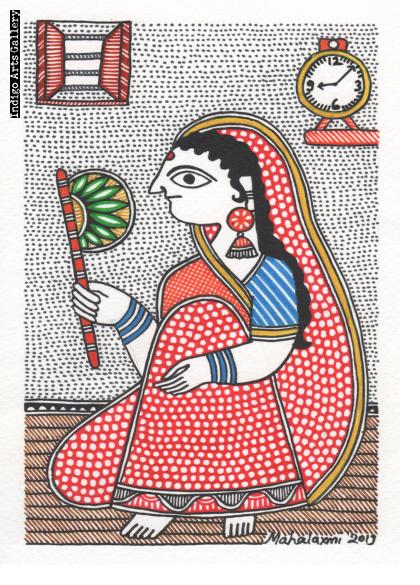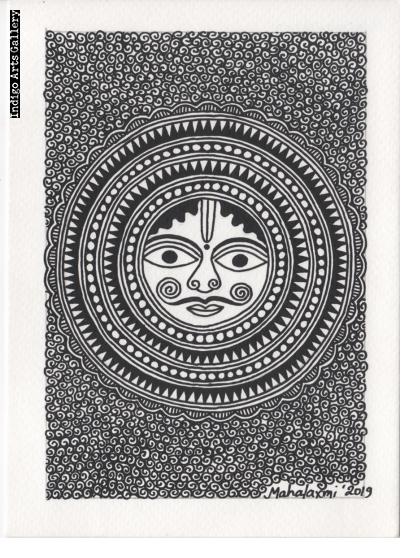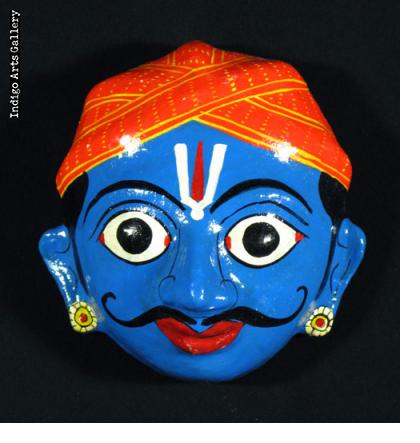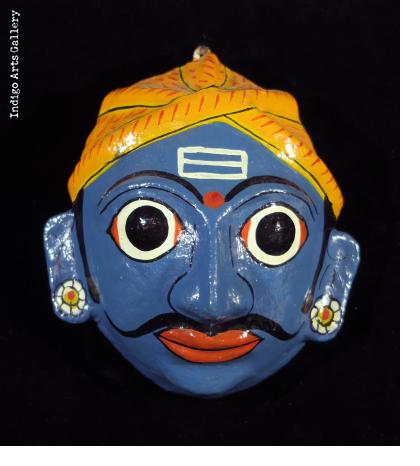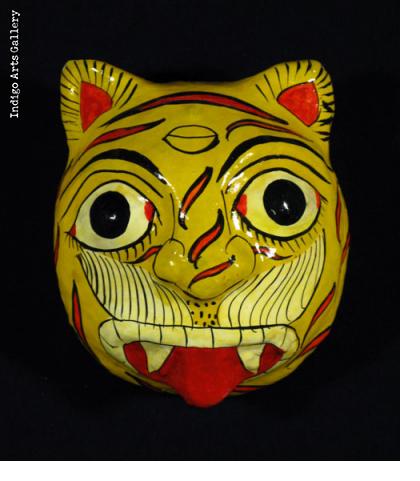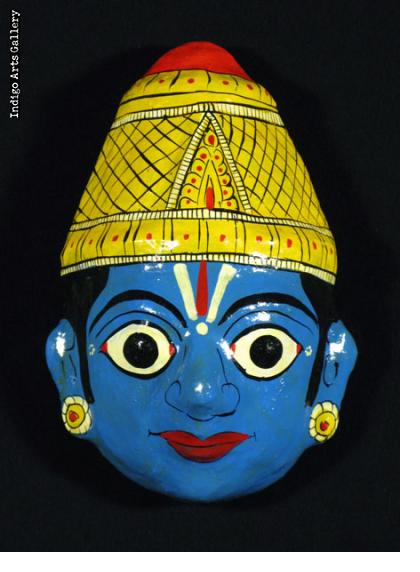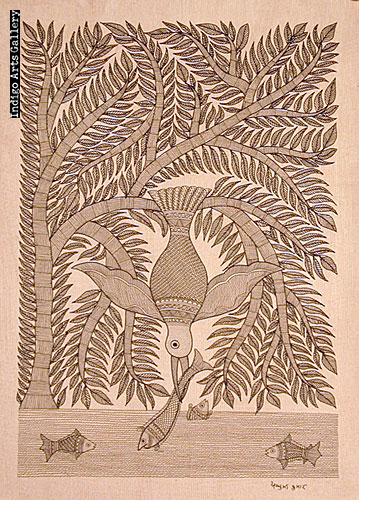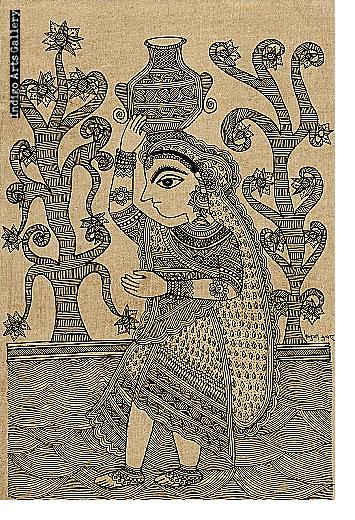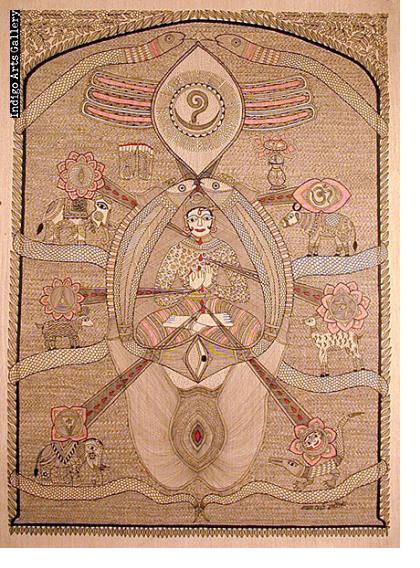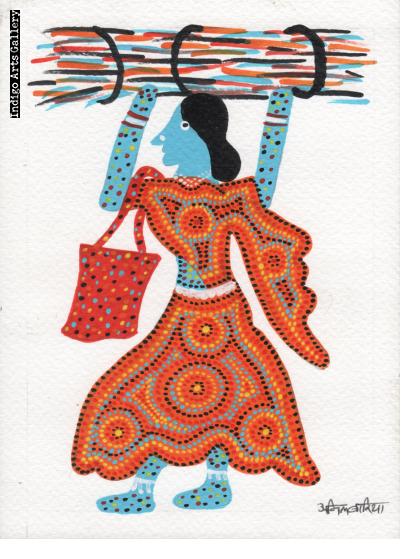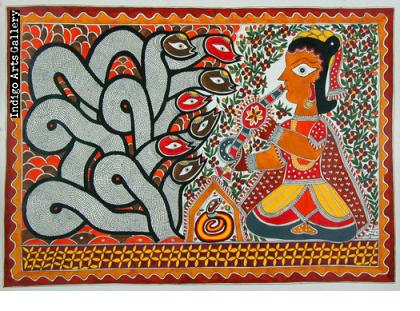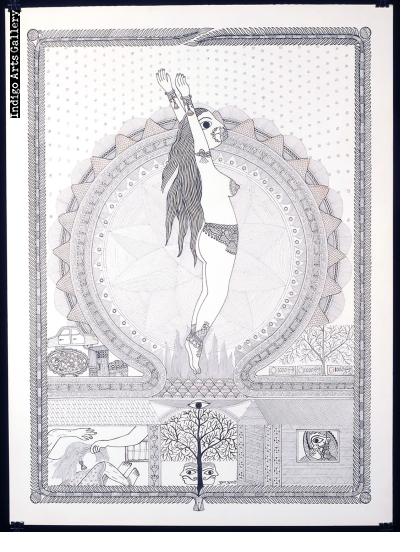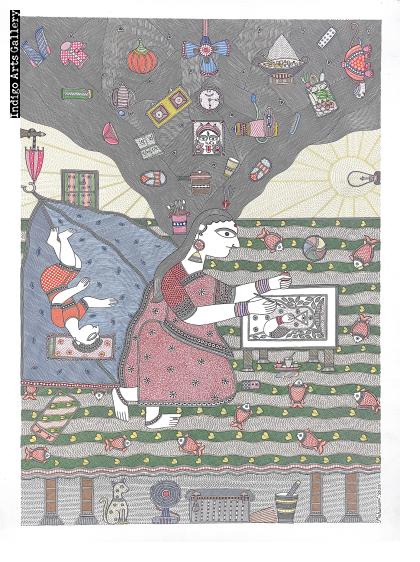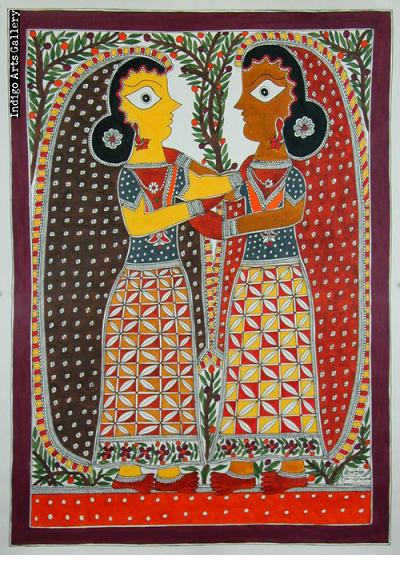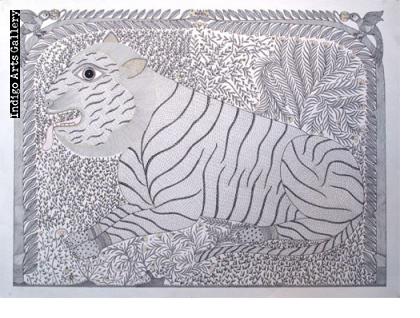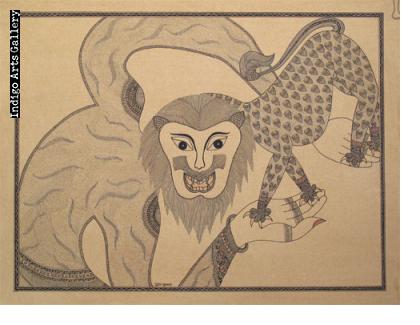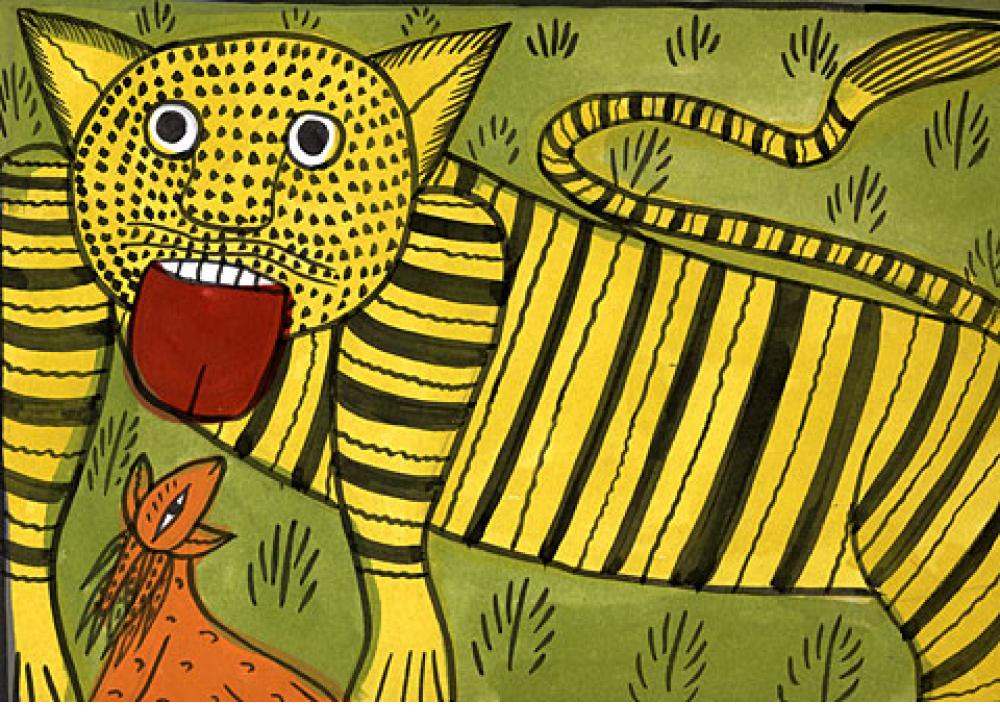
Mithila Paintings by Pushpa Kumari, Mahasundari Devi, Mala Karn, Pradyumna Kumar and others from Madhubani, Bihar
Paintings and Scrolls by Montu Chitrakar from West Bengal
Antique Santhal Scrolls from West Bengal and Bihar
The current exhibition includes three types of traditional Indian folk painting - Mithila, jadupatua and patachitra. The best known of these are the Mithila (also called Madhubani) paintings from the Mithila region of Bihar state. For centuries the women of Mithila have decorated the walls of their houses with intricate, linear designs on the occasion of marriages and other ceremonies, Painting is a key part of the education of Mithila women, culminating in the painting of the walls of the kohbar, or nuptial chamber on the occasion of a wedding. The kohbar ghar paintings are based on mythological, folk themes and tantric symbolism, though the central theme is invariably love and fertility.
The contemporary art of mithila painting was born in the early 1960’s, following the terrible Bihar famine. The women of Mithila were encouraged to apply their painting skills to paper as a means of supplementing their meager incomes. Once applied to a portable and thus more visible medium, the skills of the Mithila women were quickly recognized. The work was enthusiastically bought by tourists and folk art collectors alike. As with the wall paintings, these individual works are still painted with natural plant and mineral-derived colors, using bamboo twigs in lieu of brush or pen.
Over the ensuing forty years a wide range of styles and qualities of Mithila art have evolved, with styles differentiated by region and caste - particularly the Brahmin, Kayastha and Harijan castes. Many individual artists have emerged with distinctive styles. Among the best known early brahmin artists have been the late Ganga Devi, Baua Devi, Sita Devi, and Karpoori Devi. Today’s leading artists, working in the kayastha style, include 31 year old Pushpa Kumari and her grandmother, Mahasundari Devi, both represented in this show. Other painters in their family include Pradyumna Kumar and Pushpa’s younger sister Mala Karn. Works by several of these Mithila artists (Baua Devi, Sita Devi and Mahasundari Devi), along with Santhal jadupatua paintings and old Bengali scrolls, are included in the show Stories, Ceremonies and Souvenirs: Popular Paintings from Eastern India, currently on display at the Philadelphia Museum of Art.
The jadupatua scrolls are a very old tradition among the aboriginal Santhal people of Bihar and West Bengal. The Santhal people, one account tells us,”speak their own pre-Dravidian language of Santali, worship their own Santal bongas or spirits, regulate thei village life in a democratic manner and celebrate their own santal festivals with dancing and feasting.” The scrolls are painted by itinerant minstrel/healers known as jadupatuas, or “magic painters”. They earn their living by wandering from village to village showing scrolls and chanting the traditional tribal stories of creation, death and life in the underworld. The scrolls consist of twenty or more indivdual story panels arranged vertically, which are unrolled and rerolled as the story is sung. Older scrolls were paintied on fabric. Those shown here, dating from the last sixty years, are painted in natural paints on paper - generally a series of individual sheets sewn together.
The contemporary scrolls and paintings of Montu Chitrakar come from the distinct patachitra story-scroll tradition in the state of West Bengal. The patachitra scrolls may portray stories from the great Hindu epics, such as the Ramayana, and Sufi traditions which are also sung frame by frame. The scrolls by the young painter Montu Chitrakar venture even further into current affairs, history and other subjects outside of the traditional canon. His subjects include not only the Ramayana but the recent Gujarat earthquake and bloodly Hindu/Muslim religious riots, and incongruously even the story of the French Revolution. These scrolls are painted with vegetable dyes fixed with a vegetable gum on paper. The panels are sewn together and fabric from old saris is glued to the back to strengthen the scroll. The individual paintings by Montu Chitrakar come from the same tradition. Many depict single episodes from the story scrolls, while others,such as his iconic tiger paintings, stand on their own.
You can read reviews of the show in Philadelphia Weekly and Roberta Fallon and Libby Rosof's Artblog.

